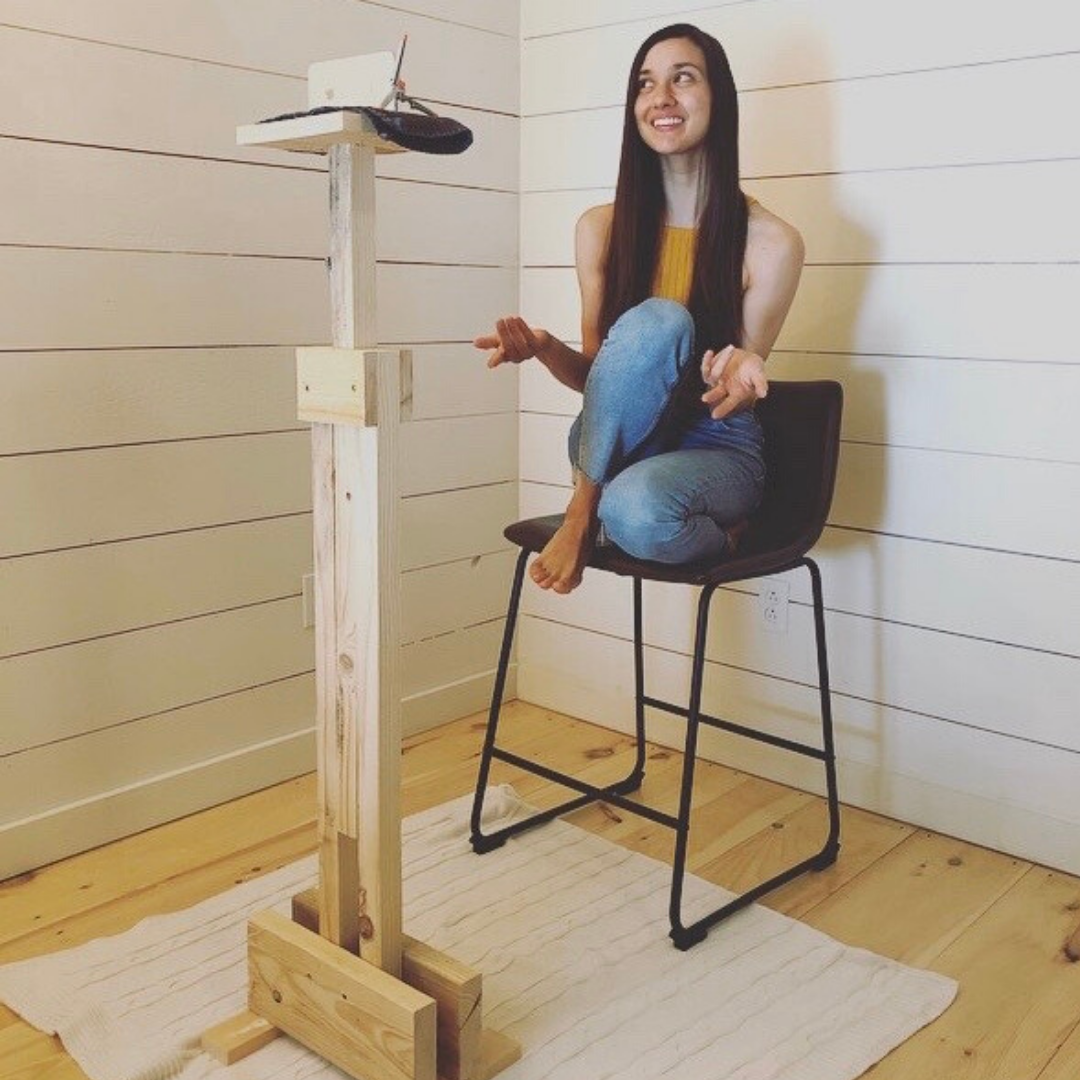
Times have changed. And you may need more self-tape tips than ever before.
Most actors have been doing self-tapes for ages already. Now, after #quarantine2020, self-tapes are the new norm. To support the ongoing rise of self-tapes, here are my top updated self-tape tips.
But, dear actors, don’t forget that the main ingredient—despite all technical tips—for a strong self-tape is: Tell the story.
When you’re in the comforts of filming in your own homes, be an inspired actor. This is the deeper work to always do. And hence, why I want to draw your attention to the “art” of the self-tape. The art comes from your contribution as an artist.
Ask yourself: Who are you in this character? Who are you inside this story?
Read my technical self-tape tips thoroughly—meditatively—and most importantly, practice the art and craft of acting in every single take.
I’ve got lots of blogs on how to reinvigorate the artist in the audition, but for now, let’s focus on the technical self-tape tips that support the art.
There are tons of details below. Use the Table of Contents to jump around if you want. Take your time with it! Bookmark this page! Return after you’ve done some self-tapes or tests. I thought to share more than you ever thought you’d need, so you’ll have tons to practice and grow with over time!
Warmly,
Heidi
P.S.—If you want to strengthen your self-tapes, join one of my on-camera acting classes!
Why Self-Tapes
Prepare: Do the Deep Work to Prep
Scene Partner: Off-Camera Reader
How Many Takes Do I Film?
Which Camera to Use?
Sound
Lighting
Background
Eye Lines & Camera Height
Makeup & Wardrobe
Camera Framing
Position Within Frame
Movement Within Frame
To Prop or Not to Prop
Slate
Selecting Takes
Editing & Labeling Files
Uploads
Actors are booking Series Regular roles and Lead Roles in Films from self-tapes. Yes, it’s true.
Actress Michelle Hurd shared her story with my alumni about booking a CBS Series Regular role in STAR TREK: PICARD from a self-tape! This is what is happening, and I know it’s not what you prefer.
In an ideal audition world, actors are invited to an in-person audition with the whole Creative Team in the room. In an ideal world, actors and creatives really get to know each other in the audition process and find out if they’re an artistic match.
But who has time for this now in our fast-paced and globalized industry? Directors are behind schedule and planning production. Casting Directors are casting multiple projects and episodes at the same time. Writers are in writers’ rooms. Actors live and work all over the country.
Today, to speed up the process and audition more actors, it’s common for the Casting Director to ask YOU to do the work alone and put yourself on tape.
In essence, this is the modern-day version of a “pre-screen”: the CD screens your work on the character and scene, and THEN decides to introduce you to the creative team—or not.
Sometimes the CD will ask actors to come to the casting office to be coached/tweaked and filmed for viewing by the Creative Team at a later point. Or, even better, the Director is in the actual room and works with the actor.
But, in order to get called in to meet the team in person, or the more rare-but-can-happen possibility of being hired straight from a taped audition, you simply must keep honing your self-tape skills.
So let’s get you to really pay attention to what works on camera and the most effective ways to translate your acting onto camera through the technicalities.
My theory about what makes good self-tapes is to approach it with the passion and enthusiasm of actually being on set and creating the work.
Below are some guidelines and self-tape tips to utilize.
However, I’m also giving you something more than just technical feedback.
I want you to think like a filmmaker when acting on camera, even in the self-tapes.
Think about creating a self-tape as preparation for actually doing the job, or, in other words, as practice to actually being on set. Think like a filmmaker, think like an audience person watching the shot.
Look for the creative side of doing self-tapes. It’s more than just good lighting and sound. It’s an opportunity to be the creative actor that you want to be.
Today, because every actor controls his/her audition submissions, it’s now expected for your acting work to be more polished. We know you filmed it over and over, and sent us your best one. Yes, you need to submit the “best” take possible.
Here’s how I define “best”: you are specific in your choices, seem prepared (if not memorized), and are generally confident with the role and material. How would Meryl Streep prepare for a self-tape? She would prep, prep, prep.
Embrace the prep because it’s an opportunity to grow deeper as an actor. Every audition is a chance to work on your craft, including self-tapes.
#1 Tip: Do what you gotta do to be prepared.
Which prep work is best?
ANY prep work is best.
Break down your scripts, memorize lines by rote without feeling so you’re free to play, try it a million different ways, chop broccoli while running the scene, sing the scene. Get the idea? There are a million ways to prep. The point is that most people simply don’t even take the time to really prep. Winging it is not going to get your job. You’ll be counting on a lot of luck to book that job. Prep prep prep.
Should I get coached?
First, this is not advocacy for all of you to coach with me or my team. It’s just to clarify that if you want an outside eye, get it. Not every actor has the luxury of a brilliant reader or the frequency of auditions to make their skills uber honed.
Yes, I do recommend, in certain scenarios, to work with an acting coach.
It’s a great idea to coach for the “important” auditions (whatever that means to you – maybe it’s your first audition for an office or maybe it’s a major role). Do you know how many people are fighting for that one role? Be on your game.
Another great time to coach is when you need a tweak to crack scenes or simply to stay inspired and on your game. A coaching session is going to move you ahead of the competition because you’ll be super PREPARED.
A good coach will sort out your choices with you and make sure that they’re clear and strong on camera. It can be superbly useful to get prepped with a coach. Every athlete has a coach. Singers have a coach. CEOs have coaches. I have had coaches for my filmmaking and my business. Coaches are so helpful to see what you may not see.
If you can’t get to a professional coach due to time or money, at least call a friend to run it or film it with you! Your peers are amazing coaches! They’ve been through it too and know the process intimately. Even 15 minutes spent running a scene with an actor-friend will give you fresh ideas to incorporate.
IMPORTANT REMINDER: I’m not saying that you should go and spend more money on your auditions with coaches—unless it’s useful to you—but I’m definitely urging you to get support. Especially, please don’t be shy about asking for support when you feel overwhelmed or uninspired, or if you’re simply feeling curious to expand.
Bottom Line: If you’re prepared for the audition, the CD and Director can trust your abilities to send you to set. Preparation increases your odds of booking.
You really need someone to read off-screen with you so that it feels fresh and alive. You’ve got two options to do it live:
Ideally, your reader will be in the same room to help you feel grounded and real. And they can hit record on the camera!
Nothing replaces the truthful spontaneity and honesty of having a scene partner opposite you. But sometimes it’s not possible—even on set. Sometimes you have to act off a spot on the wall if there’s no space for the actor to stand opposite you. Or maybe they have to go do makeup for the next scene.
For your self-tape, if you can, offer an exchange or an iced coffee to another actor to read with you.
Ideally, you want to be able to see the friend’s face while you’re doing the scene. So be clever and use technology if you can’t get a reader in the room with you. Try using Skype, Zoom, or FaceTime. Or, at the very least, get their voice on speakerphone.
Yes, there’s an extra skill to working with a reader who is on a video screen online or invisible on a speakerphone.
My main tip for working with virtual readers is this: work extra hard to really make it intimate so it feels like that person is in the room with you. It’s the very closest you’ll get to “green screen acting”. I.E., when the dinosaur is coming at you, but it’s not really there. Seek deep connection with this character through the virtual distance. Leap into the heart and eyes of the other character through the virtual void.
Your main goal is this: you really just need a live, off-camera voice to react to.
I’m sure you know at least one other actor who can read with you! Wouldn’t it be great to actually “act” with someone? Everyone needs practice, all the time. At the very least, ask a non-actor friend or family member to read the lines off camera with you. They’ll have fun and can’t harm you at all—and it’s excellent practice for on-set challenges.
Give yourself the chance to really be an actor with another actor!
Creative Self-Tape Tip: My alumni actors create buddy systems to help each other out for self-tapes. I love seeing that. You can do that too. Help an actor friend and they’ll try to help you later! Or again, friends or family not in the business often find it super fun to read with you. Try it!
As you get started, your tendency is going to be to spend hours filming. Literally. Hours. Then another hour or two stressing about which take to select. You’re not going to love this tip but here it is. Limit your filming time. Limit your amount of takes. Don’t get used to doing 15 takes on a scene. You simply won’t have time for that on sets. So don’t breed that habit now.
Spend your time on Prep. Do fewer takes.
Here are a few tools to play with:
Over time, I bet you will be nailing your self-tapes in about 3-5 takes. When I coach and film people, it’s an hour. We spend about 30-40 minutes refining the nuances of the scene and then filming in the last 20-30 minutes. And, if there are multiple scenes, I go even faster. You can do it in less time that you think.
P.S. I know from living with an actor that your scene partner readers will really appreciate it if you only use them for a limited amount of time 🙂
What ya got?
It used to be about buying the nicest DSLR camera you could afford. Nice lenses.
Now. especially after #quarantine2020, it’s about what you can make the most of with what you have access to at home. I would generally suggest to pick the option that has the best camera. Is your iPad, phone, or laptop more current? Pick the one with the best camera.
If you decide to buy a camera, then buy what you can afford. Small portable video cameras are great. They work great in low-lighting.
Also, search for the current APPS on phones. There are apps designed to film on your phones for Self-Tapes! They allow you to edit, select, and upload. Search for apps: “self tape.”
If I can’t hear you, I’m not moved by you. Do a test take and play it back to make sure that you’re secure on your sound. Most cameras have a good built-in microphone for audition purposes.
If you want to get excellent sound, you’ll need a separate mic for your camera—either a mic that mounts onto the camera, or a lavalier that you clip to your body. A lav is a great idea. Walk into a camera supply store for support for your specific camera (i.e., Best Buy or B&H Photo Video in NYC).
NOTE: Be sure that we can hear your reader.
BONUS SOUND TIP: Okay! This is a good one for anyone who needs some soundproofing for the street, neighbors, or home-mates who keep clanging while you are filming! Shhhhh doesn’t always work. This tip is one I stumbled upon while running classes and coaching online! Ready…. it’s a good one… use a white noise machine at your doorway or window to block out noise! The ones one uses to go to sleep. Amazon has tons of white noise machines—here is what I use. Please be sure to keep it some distance from your filming set-up or it might be too much room tone. At the very least, put it outside the door to your room. (It’s what they do at massage and acupuncture offices to create privacy.) And, use it for some restful sleep too 🙂
Make sure that you have direct lighting on your face. You want to avoid shadows under your eyes. Ideally, there is a sparkle in your eyes! See the light in Michele Pfeiffer’s eyes? 🙂
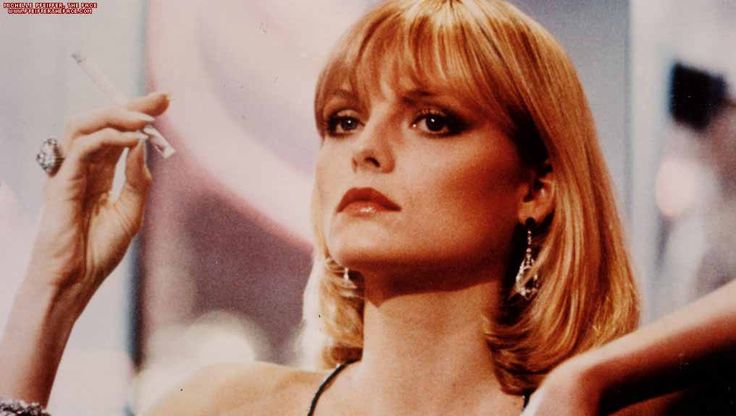
These days, yes, you can buy a professional, affordable light kit. Just google it. Ideally, you get either a RING LIGHT or a LIGHT KIT that has 2-3 lights in it. If you have two lights, put one on either side of the camera at 45 degree angles from where you’re standing while filming. If you have a third light, use it to light the back wall to minimize shadows.
If you don’t have professional lighting gear, no worries—you can do it with a lamp (no shade) and a side window with daylight! Daylight from windows is excellent fill light to break shadows on your face.
Always try to position the main source of lighting in front of you. A directional lamp is easiest—this means a light that can be aimed in a certain direction. Beware of strong overhead lighting that creates shadows under your eyes and of strong low lighting that creates the impression of a horror film. Turn off the overhead and see if that minimizes your shadows.
Creative Self-Tape Tip: A little side lighting gives depth. Best trick is to stand with a window at your side to soften your lighting and make it more natural. Place yourself near a window for that additional “fill” lighting, while your main source light is still in front of you.
Today’s HD cameras (and smartphones) are fantastic for low lighting, so you can probably do it all with just a good lamp shining in the direction of your face, or maybe even one window!
Use a simple, flat surface that is one color, ideally, cream/white/beige. Muted colors are best. In audition rooms, you’ll often see a turquoise-blue, bright-green, or gray background. I have a gray photographer’s cloth hanging in my studio. But if you don’t have those colors, don’t fuss. Go neutral and opt for a muted, soft background wall color. I recently saw a beautiful light brown wall that complimented an actor’s skin tone perfectly. Don’t use a bright background (i.e., no reds, oranges, yellows) as they’re distracting.
Let your acting really stand out against the simplest background.
Note: You can also search and purchase a pop-up backdrop. They are portable and easy to set up.
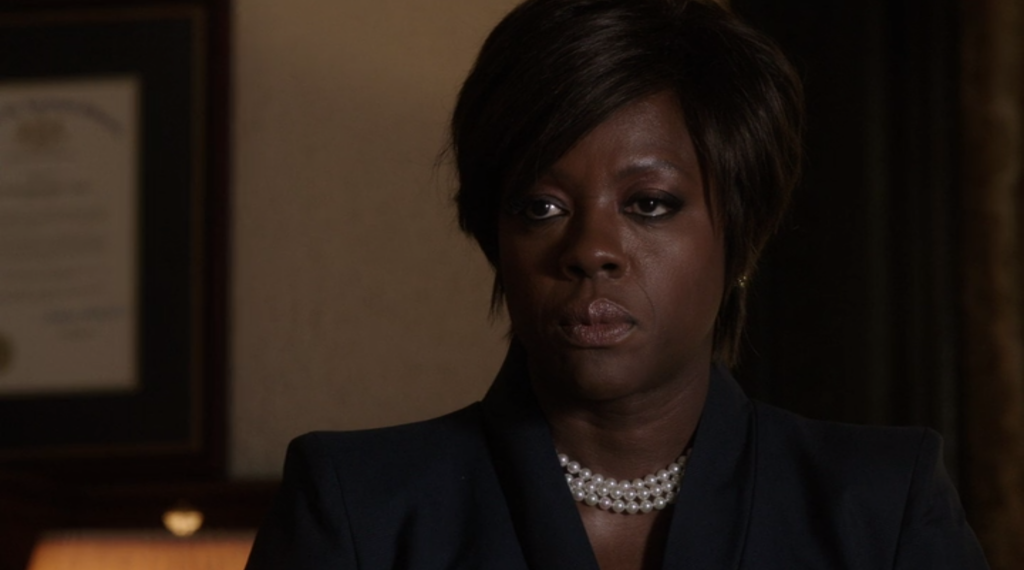
Eye lines are where your eyes look towards the off-screen characters or activities.
Self-Tape Eyeline Tip #1: Always send your eye contact off-screen to the scene partner. Do not look directly into the camera, unless you are asked to do this. See all the images above—no one is looking into camera. That’s cinematic!
How do you do this? Position your scene partner—real or virtual—as close to the camera lens as possible for good eye line. When watching your self-tape, you want it to feel intimate, but not too direct. So find that sweet spot where the auditioning actor, you, is looking close to the camera lens but not into it. That will make it feel like you are REALLY talking to someone.
Self-Tape Eyeline Tip #2: A crucial element to getting your eye lines correct is the height of the camera—not too high and not too low. Ideally, the camera is precisely at the eye level of your reader.
NOTE: If your reader is on Zoom or Skype, you’ll need to play around with the screen positions of your reader on your laptop or phone screen so that a) your eye line seems like it’s going off to the side of the camera lens, and b) you can still see your reader’s face expressions. It takes some finagling, but it’s doable!
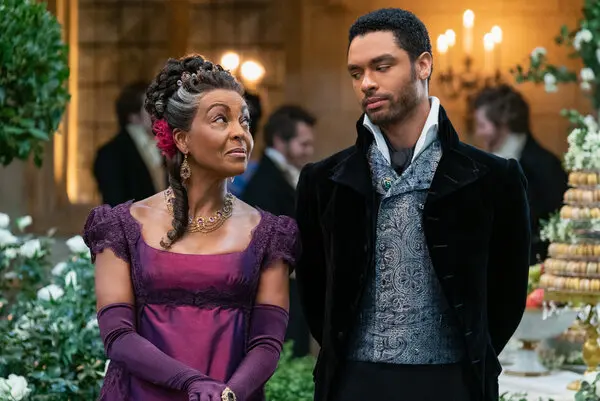
Dress suggestive of the part. This is my bottom line: how would your character dress? Especially when you’re at home, use your wardrobe to make it even more specific.
I’m not a makeup artist but I do know from film sets that the main goal is actually the “no make-up make-up”. Look like you don’t have any make-up on!
Women or All Genders: Minimal makeup for women is very important. Wear a light base/foundation that smoothes out your skin, light mascara that draws attention to your eyes, and a soft lip color that adds a pinch of color to your face. It’s called the “no makeup look.” Beware of heavy makeup that makes you look like you should be onstage, and not on camera. Really, take out that heavy eye liner and mascara. Exceptions include character roles that would be best served with heavy makeup or ZERO make-up. See non-oily skin note below.
Men or All Genders: Yes, overall, men should dress suggestive of the part too. The main make-up to pay attention to is not letting your nose or forehead be shiny on camera. Avoid excess oil on your skin. Some CDs advise using light face powder. Also, fix your hair. Give yourself at least a little style, don’t look like you just woke up and barely had time to focus on this audition (unless this is the character!). A little hipness or style can go a long way in terms of (subversively) spreading your likability. Men tend to be so casual that it can sometimes read like they don’t care about the audition or the role. So, split the difference between presenting nicely and being in character. Also, this is sneaky, but try wearing a cool jacket when you come in the room and then remove it for character. You will have arrived as a professional, and then amorphed into character. Hmmmm… cool idea, right?:) (This comes from yearssss of watching auditions, y’all.)
First, look at how movies are made. Use that as your internal guide. You want to be in the movie, right? So frame it nicely so it looks cinematic. If you’re using a smart phone, hold it horizontally like a film. With all cameras, keep it simple so we can focus on your brilliant, sensitive acting.
Think about the genre—comedy or drama? That will automatically inform you on how much body to include in the frame.
Here are some rules of thumb that I use:
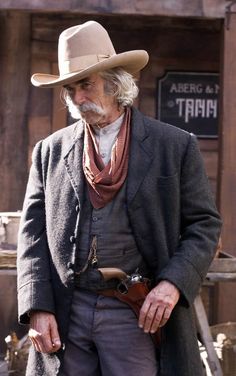
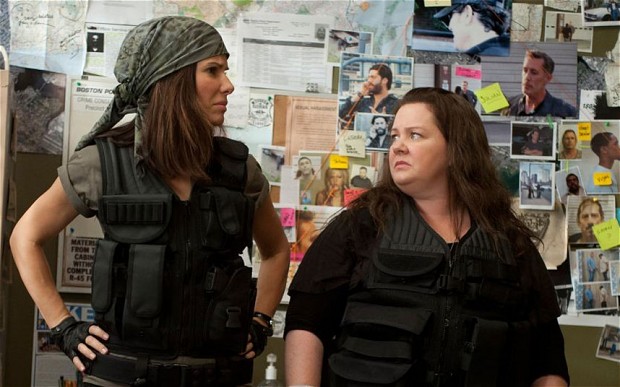
Comedy: Film a 3/4 shot, a.k.a. “cowboy shot.” It’s called a cowboy shot because the camera framing includes the gun holsters on the cowboy’s belt! So, the bottom edge of your camera frame should be about mid-thigh (at the bottom of the gun holsters), and the top frame is just above your head (remember: don’t cut off the head, and don’t have a sky above the actor!). Allow space on the left and the right so that you can gesture freely and can step a few inches to either side comfortably. Comedy needs room for the physical life of your character.
Creative Self-Tape Tip: This is also good framing for theater self-tapes. But, I will say that more and more, the theater audition requests ask for the medium close-ups…they still want to see your internal life!
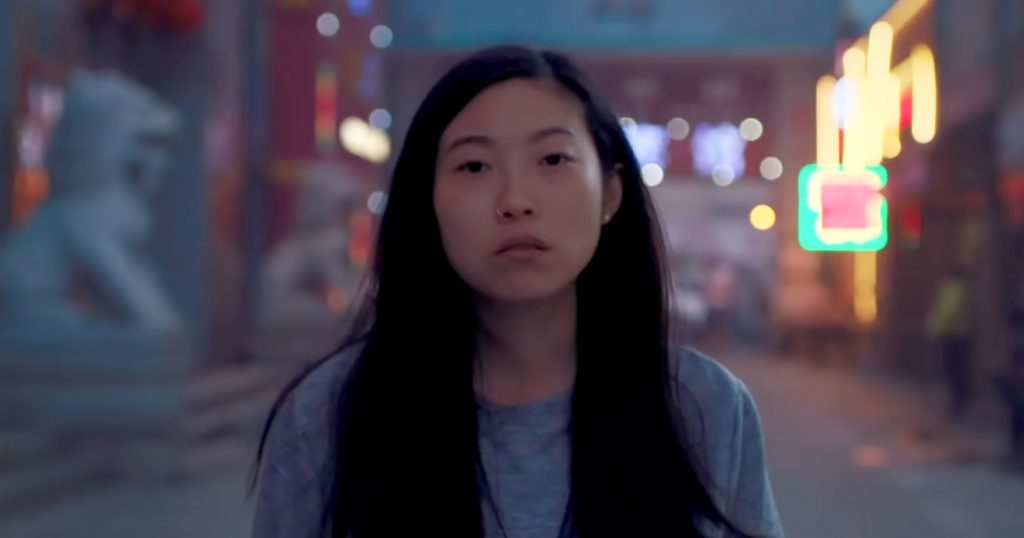
Drama: Film a medium close-up. You want the viewer to feel intimate with your performance, but not forced into it. Drama needs intimacy for the emotional life of your character.
Frame from mid-torso—or just below the shoulders (you decide what feels good)—up to a tiny bit above the head. That’s a safe bet. Don’t cut off the top of your head.
The safest option is to put the actor in the center of the frame. See Lucy Liu and Sterling K. Brown. Perfectly centered and looking just off camera.
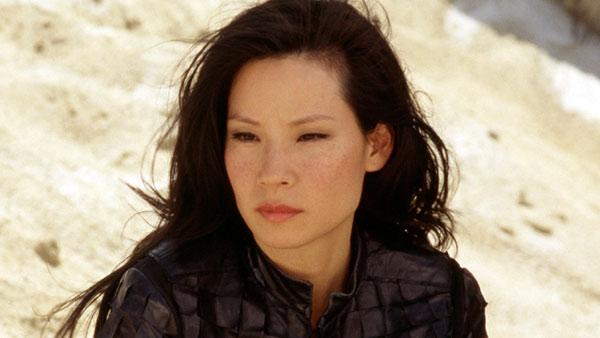
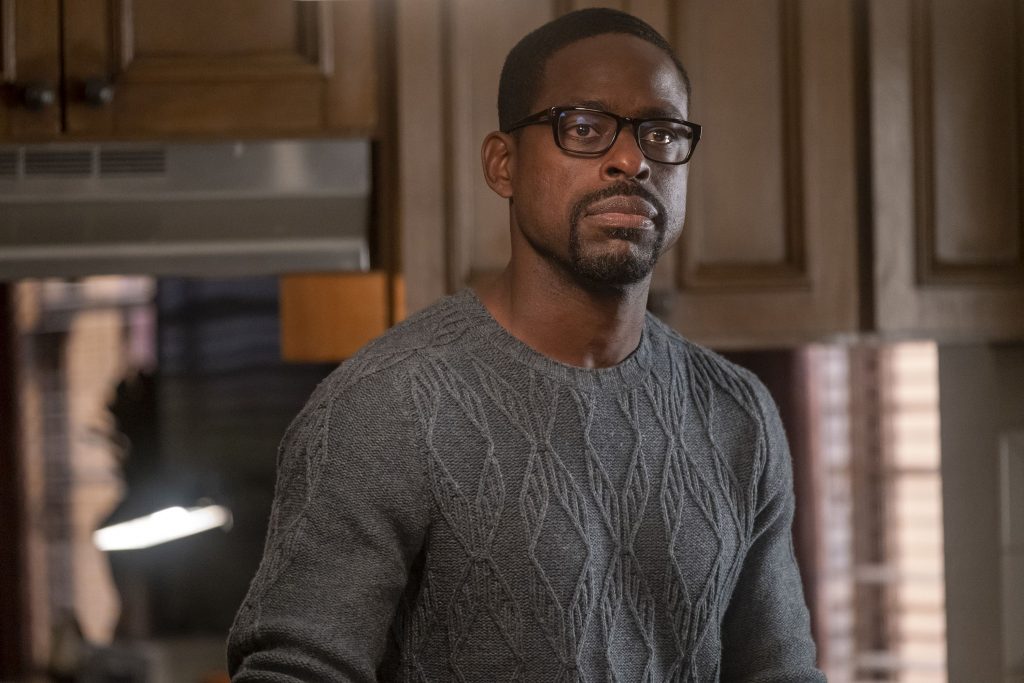
Or, you can use the “2/3 rule,” which means that the actor is in the right or left third of the frame. In the photo below, you can see that Zoe Kravitz is framed towards screen right. She is in 2/3 of the frame. But her eyes are in the direction of screen left, looking towards a person off-camera that we can’t see. There is a natural balance to that frame. If you don’t understand this technique, please just use center framing.
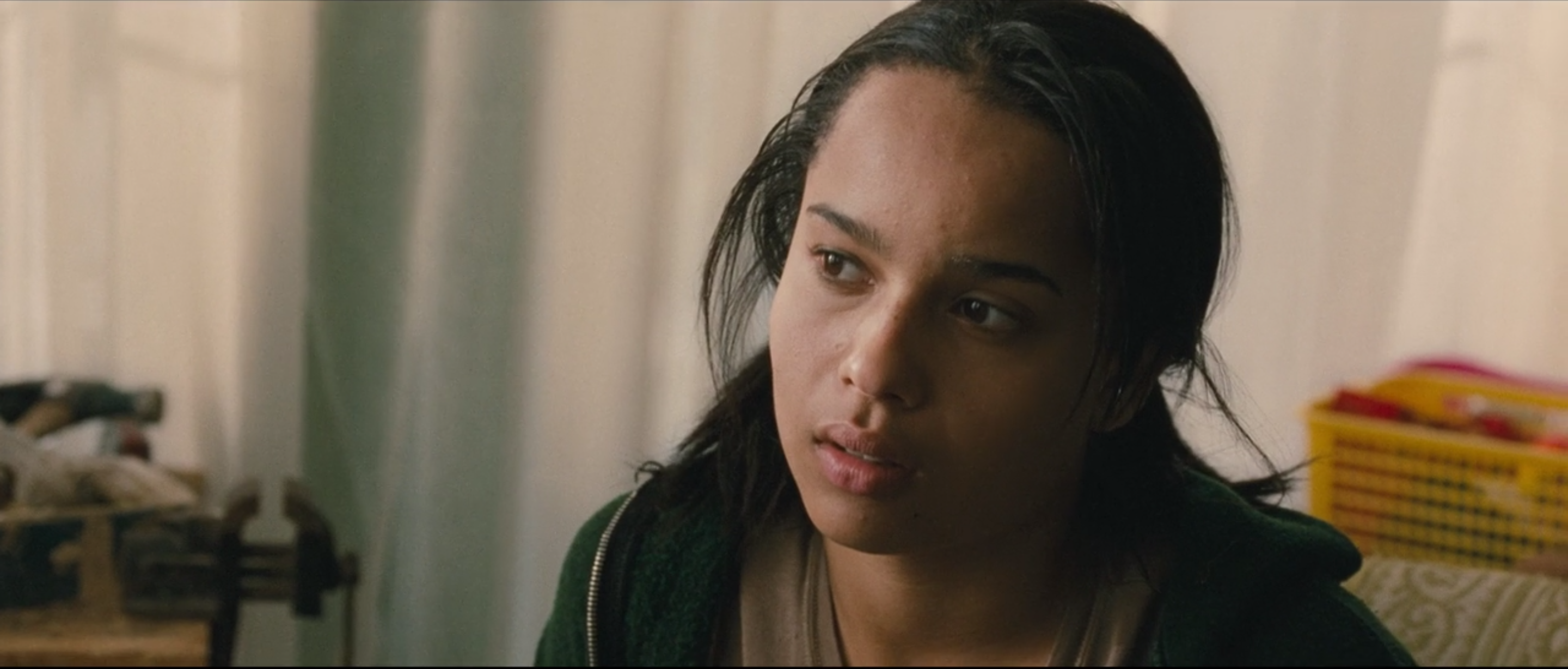
Well, here’s where I get stumped writing a description. It’s all much looser than what you think. Think more like a filmmaker in this moment – what is interesting to watch? I’m a fan of moving away from the simple “bobbing head” framing and instead, maximizing the levels and dynamics within a frame. Don’t be shy about coming closer or moving away from the camera within the take. You can make great dramatic effect with some movement samples.
After decades of coaching online and in the studio, the process of knowing how to maximize (and minimize) your on-camera movement is very instinctual to me. It’s instinctually tied to your discovery as you work, and my discovery as I see it. As you play with it and develop your own confidence, I’d say to trust yourself more than you do and to move more than you think is possible.
Work with these concepts to start!
Here is one example from a recent self-tape class that I feel shows beautifully the movement within a frame.
Thanks Toccarra Cash for letting me share it here!
Well, I’m giving all my trade secrets away… because these are my personal rules of thumb. What I feel works, and inspires, and doesn’t distract or “take out the viewer”.
In the audition room, use what you can bring with you. Ie, a bottled water can be a glass of wine.
When you’re at home, really use a prop. It’s more and more common to see actors really using props when doing self-tapes. If the scene calls for a glass of wine, sure, grab a wine glass with water in it. If it needs a stuffed animal, and you have one, grab it. Be specific in your usage of props, always.
And if the scene doesn’t call for a prop, but you have a spontaneous idea to incorporate one… go for it. Keep it real. Keep it specific. If done well, it will actually contribute to the overall believability of the scenario.
Here is one example from a recent self-tape class that I feel shows the fun usage of props!
Thanks Rachel Moses for letting me share it here! (Don’t miss the end of the scene bonus prop use she does!)
A slate is an introduction to the Creative Team. Say your name very clearly so that your name is understood clearly. Give a glimpse of personality too!
NOTE: I cover the importance of personality in your slates in my classes because I personally think it’s your secret weapon! Til I run you through the paces, try to warm up your slate because this is the only time they get a sense of your authentic personality until they meet you in person. They want to get a sense of how you’ll be to work with on set. Let them know you are human.
This is where you will hear different opinions. I can only share what I advise and have done countless times.
I suggest to submit 2 takes per scene. Why?
Creative Self-Tape Tip: If you do submit two takes per scene, be sure to give noticeable differences in each take. Or else, what is the point of offering multiples?
Don’t do any internal edits of the scene. You’re NOT making a short film.
Most CDs want the individual files, not one edited file of all takes (see below: UPLOADS).
If they don’t give you labeling directions, make sure that the file is clearly titled with YOUR NAME, PROJECT and ROLE TITLE.
Sample file name: “TRUEROMANCE_Alabama_PatriciaArquette_Scene1Take1”
*This is the area you might need more help with if you’re not tech savvy. Ask someone to support you on how to upload the file so it retains its video quality, or use the services listed below to email large files.*
Anything that you have a question about, I mean anything, is google-able. Google can usually help you out!
Some CDs prefer that you submit each take individually, so see links for upload options below. Just read their audition directions carefully, or ask and they will tell you what they prefer.
The most common current options for uploading, sharing, and viewing include the following:
You can do it! Good luck!
Remember to check out my on-camera classes and our Acting Collective community to put it all into practice.
Need more self-tape tips on how to choose lights, a backdrop, or a mic? Check out my blog post about Equipment for Self-Tape Auditions. (Top recs from alumni included!)
Save your hard work and turn your self-tapes into a portfolio channels for reps and casting. See my blog post on How to Preserve Your Favorite Self-Tapes.
Last but not least, discover a surprisingly effective way to connect with a remote reader by checking out my blog post How to Self-Tape Auditions on Zoom.
Evangelia Kingsley says
Thanks, Heidi. As always, great advice!
Madison Russell says
Hi Heidi,
Great blog post. I am excited to enroll in your class soon.
Warmly,
Madison Russell
Callum Palmer says
These are some fantastic tips; after all, a lot of work has to go into creating the perfect self-tape to send in to auditions. I especially like that the article goes over the different kinds of camera framing you should use. The type of genre that you’re auditioning for can really make a difference when it comes to camera position and angle.
Janet Aldrich says
MOST valuable session with you – and worth taping.
I noticed some CDs, when you audition in their office, forego any slating. Is this a new thing?
Also, I have a few lights, but am really excited about filling with the window -thank you!
Kendrick Mitchell says
Woww I totally didn’t know about the framing for a comedy. This was all very helpful! Thanks so much for these nuggets. Such a great reminder!
Heidi Marshall says
Kendrick, I should add something! It might depend on the genre of comedy too. So a sitcom is certainly filmed in wider shots. But an indie comedy might be filmed more like a drama – more intimate. So, you have to also get a sense of the tone of the piece to inform how intimate or wide you might want to shoot it.
Yulia Zava says
Heidi,
Thank you for taking time to share your knowledge with us 🙂
So useful about moving withing the frame + props.
Thanks,
Yulia
Marc Verzatt says
You are all that there is in generosity. You have touched my life indelibly.
Sending you love and best wishes, and looking forward to working together with you soon!
Thank you for you.
Marc
Laura Darrell says
Thank you Heidi. Detailed, persuasive and as always thought provoking and helpful. Missing your class!
Sol C says
Thank you, Heidi. I really appreciate how you break it down for us. When I first started taping it would take me a very long time to set up and then maybe about 10 takes to “get it right”. Now it takes me about 3 takes, but the light set up is still time consuming. Recently my rep said that my lights don’t look even, or that the lights need to be better for him to pass the tape along to the CD. Can I get some leniency? I am not a lighting grip, nor a DP. And worrying about lights is taking energy away from the work. I’ve booked off of tape so I must be doing something right, but still it’s frustrating. I hope other actor friends are also pushing through technical aspects and doing what we came here to do!
Heidi Marshall says
Hmmm. Try for the 3 point lighting system, or a stronger ring light. And, YOU ARE RIGHT, keep focusing on delivering the good work and you will CONTINUE booking, Sol!
Mara Jill Herman says
Awesome advice, Heidi! Thank you for this. I hadn’t considered a noise machine before so you’ve given me a ton to think about!
Salwa Khan says
Thanks for this! Good to confirm some things I was doing and know what to work on. Looking forward to class!
Eduardo Navas says
What a great class. The perfect guide for an actor to do a self-tape. It has so many essential details and is very helpful.
Thank you, Heidi.
Eduardo.
Brianna Allen says
Just signed up for your Film/TV Acting & Auditioning Part 1 class for this February! My very first acting class! To say I’m looking forward to it would be an understatement. Just finished reading through this and I’m already inspired! I have so much to learn and I’m grateful for the opportunity:)
Thank you,
Bri